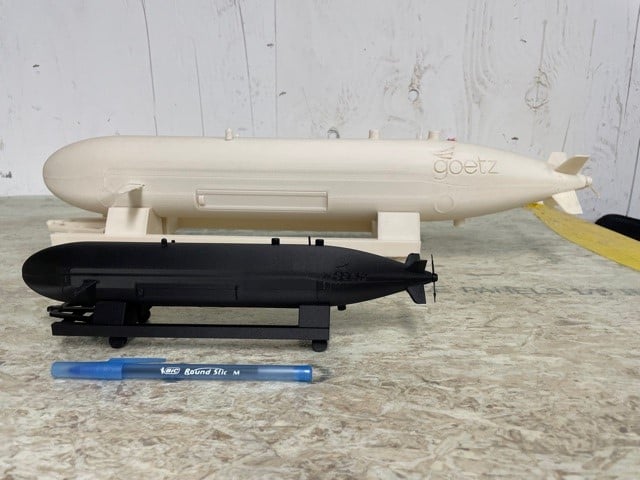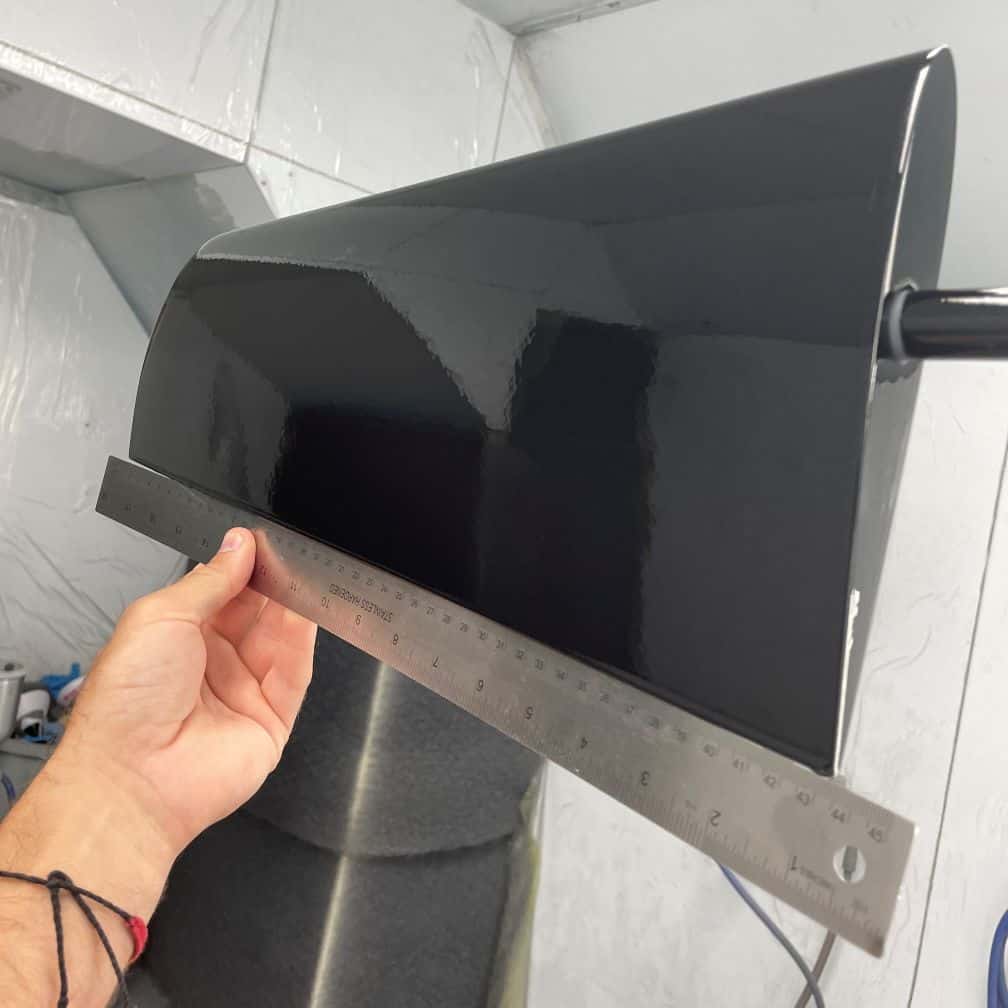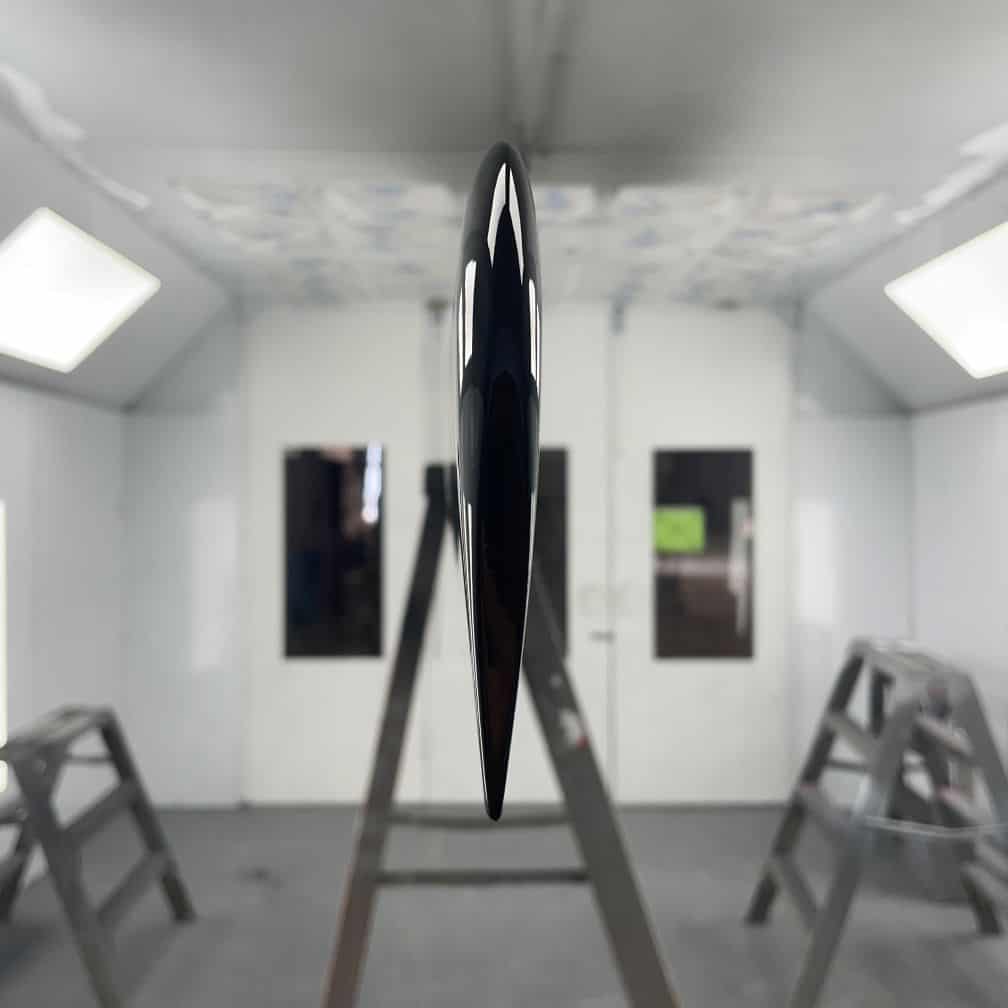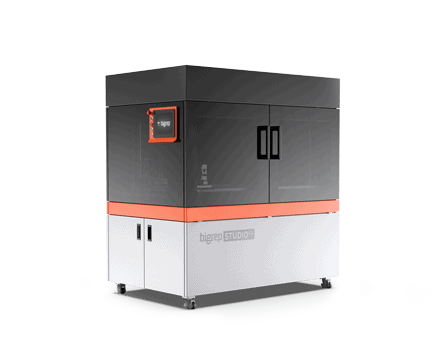The days when 3D printing only meant prototyping are over.
CET sends their parts in the harshest environment possible: Underwater.
Located in Bristol, Rhode Island (USA), Composite Energy Technologies (CET) is an industry-leading innovator in the research, design, engineering, and manufacturing of large and complex carbon composite vehicles, underwater pressure vessels, structures, and integrated systems.
Since CET’s beginning, Chief Technology Officer, Eric Goetz sought-out and developed leading-edge technologies that have been the secret ingredient for numerous Grand Prix racing sailboats, including successful America’s Cup, Volvo Ocean Race, and Maxi campaigns.
The CET team has built upon this legacy, breadth of knowledge, and experience to produce systems that can reliably execute diverse mission sets in severe and complex operational environments. To accomplish this, CET needed a manufacturing processes that could help them be faster, reduce costs and produce better parts.

Big Parts. Big Ideas.
CET is not unfamiliar with 3D printing, having operated several smaller 3D printers and even one larger system, but these did not meet their needs. They realized that with the size of their parts, they required an industrial, reliable, flexible, and big printer to meet their needs and open doors to more opportunities.
Adam Ceely, Innovation and Development Projects Engineer at CET, said, “Things I was looking for (in a 3D printer) were a more controlled environment and a better operating and control system. I needed a system that will check how the print is doing, where it is on the XYZ location, and ability to change and react to the different temperatures of thermal expansion.”
In addition to producing prototypes, CET also planned to equip their products with 3D printed end-use parts. Therefore, it was vitally important that a flexible solution could be implemented that would also be easily adaptable to various challenges and changing boundary conditions. In the latest BigRep STUDIO, CET has found a machine that meets all these criteria.
Unmanned Underwater Vehicles
CET specializes in making unmanned underwater vehicles (UUV), sometimes referred to as underwater drones, which are any submersible vehicles that can operate underwater without a human occupant. Historically, CET would CNC machine the fins for these UUVs out of a block of G10 fiberglass/epoxy which is very expensive and involves a ton of waste. CNC machining also requires a lot of labor hours programming the tool paths for a piece that requires the precise and complex geometry necessary in a wing shape.
Enter BigRep and the STUDIO. Now with additive manufacturing, CET can produce their fins faster, with less waste, and a fraction of the cost. Using BigRep Hi-Temp CF material with 100% infill and then post-processing parts by applying a sprayed-on polyurethane coating, they were able create a watertight seal.
This fin was made for UUV actuation and steering and was designed to integrate with non-AM systems in CET manufactured UUVs.

Integrating 3D printed parts with non-AM systems
An advantage of 3D printing is its ability to complement non-AM systems. For CET, a 3D printer was required that would accurately produce parts, which could then integrate with non-AM components. There are a few methods to combine such parts, for example...
Mechanically fastening – Printing through holes, or voids to install traditional bolts or threaded inserts.
Potting – Print a recess into a part that a non-AM part can insert into, then fill the recess with some epoxy and cure.
Taping – Take a piece of fiberglass or carbon fiber, wet it out with epoxy and then simply tape over the interface and allow the sheet or piece of fiberglass/carbon to cure.
By utilizing both AM and non-AM technology and parts, CET can expand the company’s capabilities and find viable solutions for problems that could not be solved before. Their BigRep STUDIO 3D printer allows them to do all this with the accuracy required.

Forward Thinking
“For CET, the integration between 3D printed parts and traditional carbon fiber parts comes easily, and all our staff now notices the advantages, concepts and how to work with it.” More and more people come to Adam Ceely asking, “Can we 3D print something like this?” The company is embracing and realizing all the ways 3D printing and the BigRep STUDIO helps them tackle problems that come their way. Recently CET has even begun to design and 3D print tooling for other internal processes and tasks.
When purchased, CET’s prime usage of the STUDIO was for research and development on their own manufacturing processes. It provided the freedom to print difficult shaped parts that could not be made through traditional composite layups, and the size has helped alleviate some of the roadblocks. This is especially helpful as CET creates things that have never been built before, so it is difficult or even impossible to draw from previous experiences.
“I think our biggest benefit has been really just expanding our capabilities and making us rethink our manufacturing processes.”
Adam Ceely, Innovation and Development Projects Engineer
GRADUATE FROM DESKTOP. GET INDUSTRIAL.
The BigRep STUDIO G2 gets 3D printing off your desk and takes it to the next level. Operating with the same ease as a desktop 3D printer and with 10 times the build volume, the STUDIO G2 provides large-scale industrial manufacturing capabilities in a compact “fits everywhere” build.
GRADUATE FROM DESKTOP. GET INDUSTRIAL.
The BigRep STUDIO G2 gets 3D printing off your desk and takes it to the next level. Operating with the same ease as a desktop 3D printer and with 10 times the build volume, the STUDIO G2 provides large-scale industrial manufacturing capabilities in a compact “fits everywhere” build.
